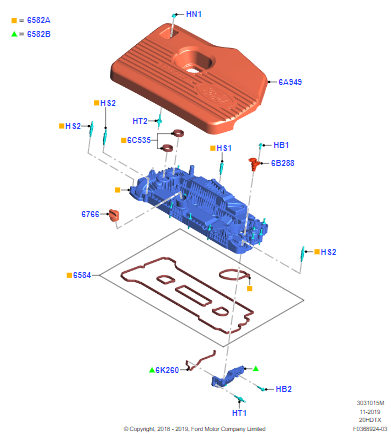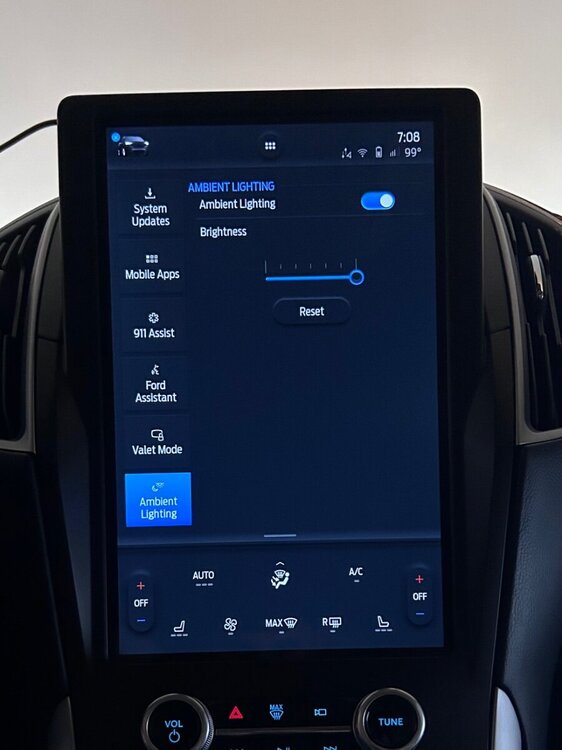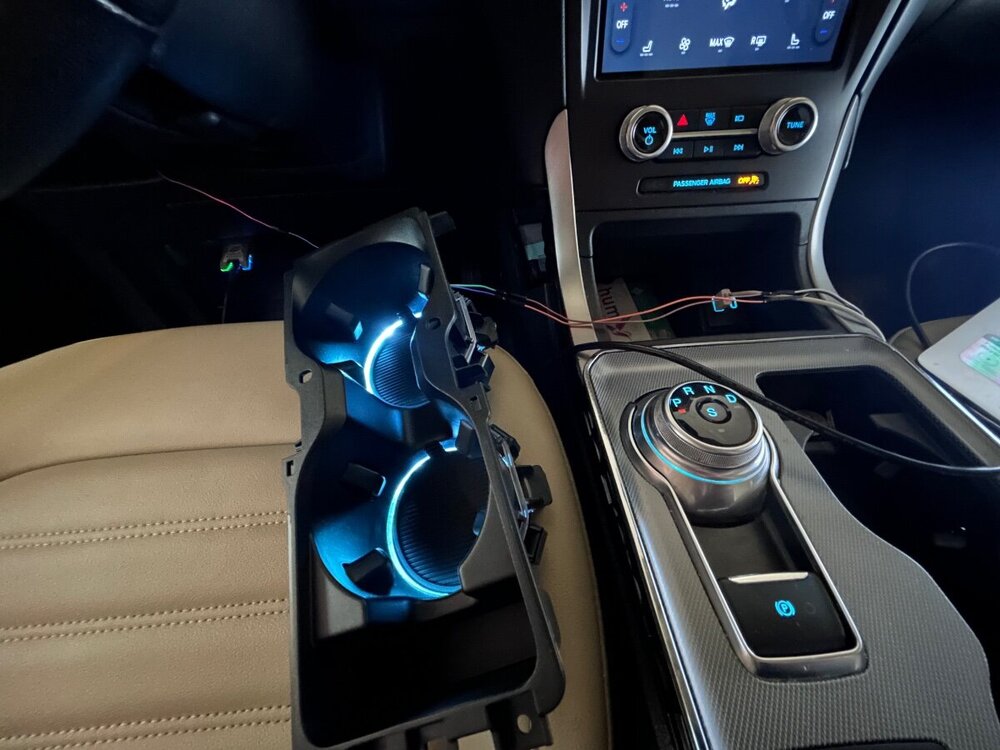-
Posts
351 -
Joined
-
Last visited
-
Days Won
9
Content Type
Profiles
Forums
Gallery
Everything posted by Wubster100
-
Have you tried to test the connection with a multimeter to see if there is voltage to the turn signal?
- 10 replies
-
- parking lights
- brake light
-
(and 2 more)
Tagged with:
-
If the front turn signal is working, then there should be no problem with the front turn signal bulb. The bulb has two filaments, a bright turn signal and dim marker light. The marker light is most likely disabled and not used.
- 10 replies
-
- parking lights
- brake light
-
(and 2 more)
Tagged with:
-
The front turn signals are dual filament halogen bulbs. Have you looked at them? Is your turn signal still blinking fast? Also, I think the bulb outage detection works independently for each turn signal, because one time my front headlight was unplugged, so the front turn signal didn’t work. The IPC flashed the turn signal fast, yet the rear turn signal worked at normal speed.
- 10 replies
-
- parking lights
- brake light
-
(and 2 more)
Tagged with:
-

2025 Nautilus Order Guides - U.S. and Canada
Wubster100 replied to Haz's topic in Buying, Leasing & Ordering
No side sensing system or active park assist. 😡 The connected vehicle modems reported that no one used active park assist, so Ford is going to get rid of it to save about $60 per vehicle, or $10 million a year. These Lincolns are already expensive enough, so why not keep active park assist for the Lincoln Black Label trims? -

Auto start/Stop Stopped working
Wubster100 replied to BMWR1200c's topic in 2019-Current Edge & Nautilius
Thanks for sharing the solution @BMWR1200c. When you disable auto start stop with FORScan, doesn’t this also mean that the BMS is disabled, too? Could the BMS being disabled shorten the lifespan of the battery? -
I added puddle lights to mine. Does your titanium already have puddle lights? I think that logo projectors and black emblems would look nice. Another option could be installing the projector on the bottom of the door.
-

Auto start/Stop Stopped working
Wubster100 replied to BMWR1200c's topic in 2019-Current Edge & Nautilius
Good idea if you are still under warranty! -

Putting a new screen in my ‘19?
Wubster100 replied to eric1's topic in Audio, Backup, Navigation & SYNC
There are companies out there that sell SYNC 3 to SYNC 4 upgrade kits. Some kits use the existing 8" screen, while other kits replace both the screen and APIM. I haven't found any Edge specific kits. The basic idea is to replace the APIM and touchscreen. https://www.fordsync4.com/ https://infotainment.com/ -

Engine cover for 2020 Edge Titanium 2.0L ??
Wubster100 replied to cdestuck's topic in Exterior & Body
-

Auto start/Stop Stopped working
Wubster100 replied to BMWR1200c's topic in 2019-Current Edge & Nautilius
You might need to scroll through the up and down arrows until you can find the auto start stop screen. If I remember correctly it will say “engine on normal operation” when driving. It will also include messages like auto start stop disabled due to steering maneuver. -

Auto start/Stop Stopped working
Wubster100 replied to BMWR1200c's topic in 2019-Current Edge & Nautilius
In the IPC, if you go to the fuel economy section it will tell you why auto start stop is off. I have a 2021 with 68k miles, and my auto start stop hasn’t worked for a while. I always get the message “engine on due to battery charging”. I will have to check my BAT_ST_CHRG % to see what mine says. After going on the highway for 8 hours, my auto start stop worked again for a few days, then it went back to not working. Technically you are only supposed to reset the BMS when the battery gets replaced. I reset my BMS anyway without replacing the battery and it didn’t seem to have an effect. I don’t think it will matter anyway because if the car is locked and it goes to sleep for a while, the BMS will relearn on its own. -

Putting a new screen in my ‘19?
Wubster100 replied to eric1's topic in Audio, Backup, Navigation & SYNC
My 2021 has the large screen. The bottom part of the screen gets taken up by the climate control and menu. The climate control menu takes a little while to get used to because there are no physical buttons. Having a screen makes it cheaper and easier for Ford than installing physical buttons. I get a nice and large Carplay screen. The reverse camera quality looks crystal clear, and it is especially helpful at night. -
I am considering adding the paddles, and I might as well try heated steering wheel too. Just need to find the parts at the right price.
-

Tail Light Moisture Condensation 2019-2024
Wubster100 replied to Wubster100's topic in 2019-Current Edge & Nautilius
Thanks for the service bulletin information. I don't think I have any warranty left. It is a 2021 with 68,000 miles. Right now the condensation went away. I have never seen condensation in any of my other lights. It just occasionally happens to that one. I will have to keep watching it and see what happens. -

Tail Light Moisture Condensation 2019-2024
Wubster100 replied to Wubster100's topic in 2019-Current Edge & Nautilius
I agree, I think drilling a hole would be a last resort situation. Cosmetically, I think it will be fine. I just worry that the moisture could damage the LEDs. -
I occasionally get moisture inside of my passenger side inner tail light. This tail light only has reverse LEDs. I have read the other posts about moisture in the 2015-2018 tail lights, but I haven’t heard of 2019-2024 condensation. Has anyone experienced condensation like this? Should I try to take apart the tail light to get rid of the moisture before my LEDs get killed? The tail light prices seem expensive. $200-400 USD.
-
You can the AsBuilt data from the VIN to figure out if it has ACC. Although this is a more advanced method.
-
Rear Bumper Cover - Removal and Installation - 2021 Edge Workshop Manual.pdf
-
BLIS NOTE: If a trailer is attached to the vehicle, the BLIS may detect the trailer and cause a false alert. It is recommended to manually turn the BLIS and CTA system off via the IPC menu if a trailer is attached to the vehicle. The BLIS provides alerts to the driver when the vehicle is in a forward gear and the vehicle speeds is greater than 10 km/h (6 mph). The BLIS can trigger an alert for vehicles that enter the blind zone from the rear, front, or merge into the blind zone from the side. The exterior mirror BLIS/ CTA LED illuminates in the right and/or left exterior mirror when a target is present. For vehicles that pass through the blind zone quickly, typically less than 2 seconds, the BLIS may not trigger an alert. If a turn signal is active while BLIS has detected a target in the blind zone, the BLIS/ CTA LED flashes rapidly. When the turn signal is off, the BLIS target warnings are a constant LED illumination. NOTE: The BLIS is not intended to detect parked vehicles, pedestrians, or objects such as fences, guard rails or trees. NOTE: There should be no bumper stickers or body filler material used on the rear side bumper cover in the vicinity of the SODL or SODR. Due to the nature of radar technology, false alerts may occur under certain circumstances. False alerts occur when the LED illuminates with no target present. False alerts up to 3% (3 out of 100 targets) is considered normal operation. False alerts are temporary and self-correcting. False alerts may be caused by sharp turns around a pole or building, jogging pedestrians or fast moving shopping carts. Missed targets occur when a target is present and the LED does not illuminate. Missed targets up to 1% (1 out of 100 targets) is considered normal operation. Circumstances that cause missed alerts are: Debris build-up or bumper stickers on the rear bumper sides Certain maneuvering of the vehicles entering and exiting the blind zone Vehicles passing through the blind zone at high rates of speed When several vehicles forming a convoy pass through the blind zone The BLIS may not detect an adjacent target immediately when the vehicle accelerates from a standing start with another vehicle alongside. CTA NOTE: The CTA system is only active when reverse gear is selected. NOTE: If a trailer is attached to the vehicle, the CTA system may detect the trailer and cause a false alert. It is recommended to manually turn the BLIS and CTA system off via the IPC menu if trailer is attached to the vehicle. When the transmission is in reverse, the CTA system can detect a vehicle or a bicycle that is approaching at a speed between 8 km/h and 64 km/h (5 mph and 40 mph) and time to impact is between 1 and 2.5 seconds. The distance at which an alert is generated varies depending on the speed of the approaching vehicles or bicycles. The CTA system response time and performance can degrade if vehicles are approaching at speeds greater than 64 km/h (40 mph). An adjacent parked vehicle or object can affect the systems ability to detect approaching vehicles or bicycles (refer to figure 1). Parking at extreme angles can further affect the systems ability to detect approaching vehicles or bicycles (refer to figure 2). Backing towards a curve road can also affect systems ability to detect approaching vehicles or bicycles (refer to figure 3). CTA detection zones: The CTA system is designed to detect any objects approaching the vehicle at a speed equal to or greater than 8 km/h (5 mph). This includes vehicles and bicycles. The CTA system has some detection limitations due to the nature of the radar technology used by the SODL and SODR. The system cannot normally detect stationary vehicles, humans, animals or objects such as fences, guard rails or trees. Circumstances that may cause non-detection are: Debris build-up or bumper stickers on the rear bumper sides The rear quarter panel of the vehicle is obstructed or partially obstructed by an adjacently parked vehicle or object Vehicle approaching at speeds greater than 64 km/h (40 mph) Driving in reverse faster than 12 km/h (8 mph) Damage to sensor and/or sensor area Due to the nature of radar technology, there may be certain instances when the CTA system alerts the operator, when no object or vehicle is present while backing up. This is known as a false alert. False alerts up to 3% of the time (3 times out of 100 reversals) are considered normal. A false alert may occur when backing out of a garage or backing into a parking space and objects or vehicles are very close to the radar sensors. False alerts are temporary and self-correcting. Missed targets occur when a target is present and the LED does not illuminate. Missed targets up to 1% (1 out of 100 targets) is considered normal operation. Circumstances that cause missed alerts are: Debris build-up or bumper stickers on the rear bumper sides Certain maneuvering of the vehicles entering and exiting the detection zone Vehicles passing through the detection zone at high rates of speed When several vehicles forming a convoy pass through the detection zone Exterior Mirror Indication When the BLIS or CTA system is active and an object is detected by the SODL or SODR, the BLIS/ CTA LED command message is sent from the SODL or SODR to the DDM or PDM. The DDM and PDM supply voltage and ground to illuminate their respective exterior mirror BLIS/ CTA LED based on messages received from the SODL and SODR. Each time the vehicle is started, the SODL and SODR command the DDM and PDM to illuminate the exterior mirror BLIS/ CTA Light Emitting Diodes (LEDs) for approximately 3 seconds, indicating the BLIS and CTA system is operational. If a BLIS or CTA system fault is present, the exterior mirror BLIS/ CTA Light Emitting Diodes (LEDs) remains off, the IPC BLIS RTT illuminates and a message center warning displays BLIND SPOT SYSTEM FAULT. BLIS and CTA Message Center Function NOTE: CTA system faults may not be detected until the transmission is placed in reverse. NOTE: The BLIS and CTA system menus in the message center are not available when a MyKey restricted key is in use. The BLIS can be turned off by using the blind spot on/off function in the message center. When the BLIS has been turned off by the driver or if a system fault is present, the BLIS RTT in the message center remains on. When turning the system on or off, the exterior mirror Light Emitting Diodes (LEDs) flash 2 times. When the BLIS is turned off, the driver cannot receive any alerts. The system remains off until turned back on by the driver. The CTA system can be turned off by selecting the CTA system on/off function in the message center. The system defaults to on with each ignition cycle. There are some system faults that set Diagnostic Trouble Codes (DTCs) in the SODL, SODR, DDM or PDM. These Diagnostic Trouble Codes (DTCs) can set a message in the IPC message center that displays BLIND SPOT SYSTEM FAULT and/or CROSS TRAFFIC SYSTEM FAULT. There are also symptom based faults that do not set a DTC. Blocked Sensor NOTE: Blockage sensing becomes active after the wipers are activated. NOTE: A blocked state is not a system fault. A blocked state is a normal mode of operation under blocked conditions. An excessive build-up of materials on the rear bumper sides, such as mud or snow, can cause the BLIS or CTA system functionality to degrade. Heavy rain can have the same affect on the system. If a blocked state is detected, the SODL and SODR blockage sensing senses the performance degradation and enters the SODL and SODR into a blocked state. The performance degradation means alerting late on targets or additional missed targets. Upon entering a blocked state, the SODL and/or SODR send a status message over the MS-CAN to the GWM. The GWM then sends the status message to the IPC on the HS-CAN3. The message center displays BLIND SPOT NOT AVAILABLE SENSOR BLOCKED or CROSS TRAFFIC NOT AVAILABLE SENSOR BLOCKED and the LH and RH exterior mirror BLIS/ CTA Light Emitting Diodes (LEDs) illuminate. The message center warning can be cleared by the driver, but the amber BLIS off RTT in the IPC remains illuminated. A blocked state will self-clear when blockage sensing senses performance has returned to normal operation. The ignition can also be cycled off to clear the blocked state. If the blockage is still present after the ignition cycle, or after some drive time the system detects again that it is blocked, the blocked sensor message is displayed again in the message center and the amber BLIS off IPC RTT is illuminated again. Due to the nature of radar technology, it is possible to get a blocked sensor warning without the radar sensor being blocked. This is rare and is known as a false blockage warning. A false blocked condition either self-clears or clears after an ignition cycle. Component Description SODL / SODR The SODL and SODR are radar based sensors that are located rearward of the rear wheel under the bumper cover. These sensors detect targets for the BLIS and CTA system. The modules are capable of storing Diagnostic Trouble Codes (DTCs) for the BLIS or CTA system when a concern exists. The SODL and SODR communicate through the MS-CAN. The SODL and SODR require PMI when replaced. DDM/ PDM The DDM and PDM supply voltage and ground to illuminate their respective exterior mirror BLIS/ CTA LED based on messages received from the SODL and SODR. The modules are capable of storing Diagnostic Trouble Codes (DTCs) for the BLIS or CTA system when a concern exists. The DDM and PDM communicate through the MS-CAN. The DDM and PDM require PMI when replaced. BLIS/ CTA LED The BLIS/ CTA LED is integral to the LH and RH exterior mirror glass.
-

Insert for compartment located on console
Wubster100 replied to Keith1341's topic in 2019-Current Edge & Nautilius
My 2021 doesn't have that rubber mat, but I got it used. I just purchased a brand new cup holder and it didn't come with that rubber mat either. A quick browse through pictures... looks like the 2019-2020 has the insert. -
Can you scan the codes? Most auto parts stores will scan for free. Get your own code reader or use something like FORScan. Also see if the FordPass app shows any DTC information.
-

Edge ST 2022, Ambient light in the cupholder
Wubster100 replied to hsprime85's topic in Interior, A.C., Heat, Interior Trim
SUCCESS! 😊 I finally got this cupholder to light up! I connected LIN to the BCM, and I got power temporarily from the 12v power point. It took me a while to test the BCM configuration. I still need to go back and remove some unnecessary changes, such as the lost communication with seat module. So, my next steps are to: 1. Finalize and document AsBuilt data 2. Run LIN wire from BCM driver’s area to center console area. 3. Find a permanent power source, possibly a nearby illumination circuit. 4. Replace cupholder (easy). -
Sorry, I should have been more specific. It seems like newer Fords, maybe around 2015ish and above, seem to use the brakes with cruise control. Older vehicles seem to only downshift and use engine braking. I have not heard of any other Ford owners being able to disable this braking feature on cruise control. I haven’t heard of anyone even trying. Is the only solution to temporarily cancel cruise control when going downhill?








